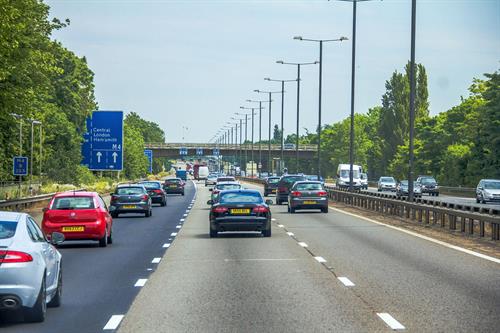- “Halt the rollout of smart motorways until a proper safety review has been completed,” says GEM spokesperson
ROAD SAFETY and breakdown cover specialist GEM Motoring Assist is encouraging drivers to put safety first on motorway journeys. The organisation is also calling for a stop to the rollout of smart motorways until a proper safety review has taken place -and sufficient refuge areas have been provided to assist stranded motorists.
GEM road safety officer Neil Worth offered some reassurance for drivers: “Motorways may be the fastest roads we use, but they are statistically also the safest; and there are fewer collisions on motorways than on other roads,” he said.
“However, the high speeds used on motorways mean that when there is a crash, it is likely to be more serious. That’s why on average around one in 50 motorway collisions is fatal, compared with one in 70 on all other roads.
“We are also asking ministers and highways authorities specifically to call a halt to their rollout of smart motorways across the country until a proper review of safety has been completed and adequate refuge areas provided for drivers.
“In order to maximise safety, we also urge drivers to ensure they know the rules and signs relating to smart motorways, which are becoming more commonplace.”
GEM says it is regrettable that in spite of the spread of smart motorways, there is still no specific advice contained in the Highway Code – a situation that is unacceptable, bearing in mind that so many motorists are being penalised every day for being at the wrong speed or in a closed lane.
“Understanding how a smart motorway works, and knowing what to do if you are unfortunate enough to experience a breakdown in a stretch of smart motorway, could well prove a lifesaver,” adds Neil Worth.
GEM has compiled 10 tips for safer motorway driving:
- Plan your journey so you know when to join and leave the motorway. You’re far less likely to be taken by surprise when it comes to choosing the correct lane at junctions and intersections.
- Choose a safe speed and use the left hand lane of the motorway unless you are overtaking.
- Check your following distance by the ‘two second rule’. Watch the vehicle in front go past a signpost, under a bridge or past some other reference point. Then speak out: “Only a fool breaks the two second rule.” If you pass the same point before you have finished the sentence, then you are too close.
- Double your following distance in wet weather.
- Scan the road a long way ahead so that you have early sight of developing hazards.
- Make regular mirror checks. If you observe a fast-approaching vehicle, then take steps to move out of its way. Before changing lanes, check your mirrors and blind spots, and indicate your intention to move either left or right. Only commence the manoeuvre when you know you can complete it safely.
- Avoid any sort of distraction. No mobile device, no interfering with stereo or satnav, no eating or drinking. Give 100% of your attention to driving.
- If you are about to miss your motorway exit, don’t make last-minute risky manoeuvres to leave the motorway. Continue to the next junction and turn around, or follow the revised satnav instructions.
- Familiarise yourself with the rules and signs that apply to smart motorways, so that you stay safe and avoid a ticket for speeding or using a closed lane.
- Knowing what to do if you break down in a stretch of smart motorway is a big help for road safety. Then you will know what to do if you experience a breakdown yourself, and will also understand what’s happening if another vehicle breaks down. GEM’s recently revised ‘Motorist’s Breakdown and Emergency Guide’ leaflet now includes details of what to do on a smart motorway in an emergency.
- The Highways England Strategic Road Network continues to be one of the safest in the world. Our network carries a third of all traffic and two-thirds of road freight equating to 95 billion road miles travelled per year.
- Our own assessment shows the number of people harmed on our network continues to reduce with the number of collisions (8,846, 4.3% lower than 2017) and casualties (13,380, 5.9% lower than 2017).
- Separate analysis of smart motorway all-lane running schemes continues to indicate that they are as safe as our wider motorway network.
- In 2018, 1784 people tragically lost their lives on Britain’s roads which include motorways, A roads and local roads; 250 of those deaths were on England’s strategic road network of motorways and major A roads. Of the 250, 107 were on motorways.
- Smart motorways have places to stop in an emergency, including emergency areas, hard shoulders on junction slip roads and motorway service areas. These are a maximum of 1.5 miles apart and we have committed to reducing this distance on new smart motorway schemes (beginning construction in 2020) to one mile apart.
Highways England Head of Road Safety Richard Leonard said:
“Safety is the top priority for Highways England and we urge everyone who uses our roads to make it theirs too. Any death, on any type of road, is one too many. We’re working hard to improve England’s motorway and A roads and we need your help. We all have a role to play to make sure we all get home, safe and well and we’re asking all drivers to make their own safety, and that of other people, the most important thing to think about when they travel. Remember to check your vehicle, obey all signs and think about other drivers.”

















